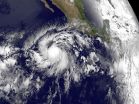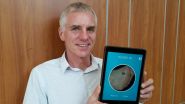INFORMATION:
Understanding markets to conserve trade-threatened species in CITES (Daniel W. S. Challender and Douglas C. MacMillan, Durrell Institute of Conservation and Ecology [DICE], University of Kent; Stuart R. Harrop, University of Sussex) is published in Biological Conservation.
Pangolin trade study highlights the need for urgent reforms to CITES
2015-05-28
(Press-News.org) New research by conservationists at the University of Kent suggests that in order to manage trade-threatened species more effectively the Convention on International Trade in Endangered Species of Wild Fauna and Flora (CITES) needs to act more upon the economic reality of wildlife trade.
In a paper published in Biological Conservation Dan Challender and colleagues, Professor Douglas MacMillan from Kent and Professor Stuart Harrop from the University of Sussex, critically and constructively evaluated the CITES approach to controlling trade through means of a case study on the trade in pangolins in Asia.
They discovered that pangolins continue to be in demand today for their meat and scales, and that relying on trade controls will likely prove inadequate to control trade and additional interventions will be needed. Rarity, the fact that pangolin meat is wild, illegality, high price, and the significance of conspicuous consumption in East and Southeast Asian consumer markets - where most demand exists - also suggest that trade controls may even act to stimulate demand, for example, by leading to higher prices.
Formed in 1975, CITES is the primary mechanism for controlling international wildlife trade, which is a major threat to biodiversity conservation. However, that the Convention doesn't adequately contend with the complex reality of wildlife trade today is worrying for biodiversity conservation, especially in a world of rapid economic and social change, where changing dynamic markets can lead to greater pressure on wildlife populations. For example, the seemingly increasing demand for pangolin products and other species of wildlife used in traditional medicines and as luxury foods and curios in parts of Asia
As part of its remit, CITES seeks to ensure that international trade does not threaten the survival in the wild of circa 35,000 species. It relies on precise and specific regulatory measures including trade bans and controls, which are established following an assessment of species' extinction risk, and the subsequent monitoring of trade levels. It is implemented by member states (currently numbering 181) through a system of permits, national legislation and enforcement mechanisms, and nominated national agencies.
In order to improve the management of trade-threatened species such as pangolins, Challender and colleagues recommend that CITES needs to accept and act upon the economic reality of wildlife trade and its broader socio-economic and cultural drivers.
They specifically highlight the need for improved monitoring of supply in CITES by accounting for illegal and legal trade, and of demand and prices for wildlife through national wildlife consumption surveys. They argue that this information would generate a more holistic understanding of wildlife trade and, if integrated with existing data collected within CITES, would allow for a more realistic evaluation of the performance of trade controls, and could inform interventions which go beyond regulation and address demand directly. Such interventions could include informed and targeted social marketing programmes to dissuade consumers from buying certain illegal wildlife products or business-to-business led social responsibility initiatives.
The team emphasises that without a new mechanism to record illegal trade, to understand markets and address demand, and evaluate the impact of trade controls, as their pangolin case study demonstrates, species listed in CITES will continue to be subject to illicit and potentially detrimental trade, despite receiving protection in the Convention .
ELSE PRESS RELEASES FROM THIS DATE:
First Eastern Pacific tropical depression runs ahead of dawn
2015-05-28
The first tropical depression of the Eastern Pacific hurricane season formed during the early morning of Thursday, May 28, 2015, well southwest of Mexico. An image of the storm taken from NOAA's GOES-West satellite shows the depression in infrared light as it was born in the early morning hours before sunrise. To the east of the depression, the GOES image shows the sunlight of dawn reaching Mexico's Yucatan Peninsula.
At 0900 UTC (5 a.m. EDT) the center of Tropical Depression One-E was located near latitude 11.0 North, longitude 110.4 West, ABOUT 685 miles (1,105 km) ...
Reading the Earth's LIPS
2015-05-28
Lip reading normally involves deciphering speech patterns, movements, gestures and expressions just by watching a person speak. Planet Earth has LIPS, too - they are an acronym for Large Igneous Provinces, huge accumulations of igneous rocks that form when hot magma extrudes from inside the Earth and flows onto the surface of the seafloor under several kilometres of water.
An international team of scientists including University of Sydney geophysicists Professor Dietmar Müller, Dr Simon Williams and Dr Maria Seton from the School of Geosciences have found a novel ...
Roadside air can be more charged than under a high-voltage power line
2015-05-28
Despite community concerns about living under high-voltage power lines, a world-first QUT study reveals that there are far more charged particles beside busy roads.
The study, published in the international journal Science of the Total Environment was conducted by Dr Rohan Jayaratne, Dr Xuan Ling and Professor Lidia Morawska from QUT's International Laboratory for Air Quality and Health who found that within 10 metres of a freeway, charged particles were up to 15 times more concentrated than beneath high-voltage power lines.
"Although the effects of ions and charged ...
Career tracking of doctorate holders
2015-05-28
ESF has just published a report on a pilot study of the career paths of post-doctorates and doctorate alumni from five research funding and research performing organisations: AXA Research Fund (AXA RF), France, Fonds National de la Recherche (FNR), Luxembourg, Goethe Graduate Academy at the Goethe University Frankfurt (GRADE), Paul Scherrer Institute (PSI), Switzerland and TDR, the Special Programme for Research and Training in Tropical Diseases, a co-sponsored programme of UNICEF, UNDP, the World Bank and WHO.
The study comprised focus groups and a survey of 880 doctorate ...
Aftershock assessment
2015-05-28
Earthquakes kill, but their aftershocks can cause the rapid collapse of buildings left standing in the aftermath of the initial quake. Research published in the International Journal of Reliability and Safety offers a new approach to predicting which buildings might be most susceptible to potentially devastating collapse due to the ground-shaking aftershock tremors.
Negar Nazari and John W. van de Lindt of the Department of Civil and Environmental Engineering, at Colorado State University in Fort Collins and Yue Li of Michigan Technological University, in Houghton, USA, ...
Merging galaxies break radio silence
2015-05-28
In the most extensive survey of its kind ever conducted, a team of scientists have found an unambiguous link between the presence of supermassive black holes that power high-speed, radio-signal-emitting jets and the merger history of their host galaxies. Almost all of the galaxies hosting these jets were found to be merging with another galaxy, or to have done so recently. The results lend significant weight to the case for jets being the result of merging black holes and will be presented in the Astrophysical Journal.
A team of astronomers using the NASA/ESA Hubble Space ...
Rubbers, roughness and reproduction
2015-05-28
Researchers from the University of Leicester have discovered that when it comes to rubbers, textured surfaces, and reproduction, more fluid formulations have greater reliability than those that are thick and sticky.
Rubber compounds are widely used to mould and produce copies of textured surfaces for scientific analysis, but so far little research has been done to establish which rubbers make the most reliable copies.
A new study published in the academic journal Scientific Reports, led by Professor Mark Purnell from the University of Leicester's Department of Geology, ...
Ombitasvir/paritaprevir/r in hepatitis C: Indication of added benefit in certain patients
2015-05-28
The fixed-dose drug combination ombitasvir/paritaprevir/ritonavir (trade name Viekirax) has been available since January 2015 for the treatment of adults with chronic hepatitis C infection. The German Institute for Quality and Efficiency in Health Care (IQWiG) examined in a dossier assessment whether this drug combination offers an added benefit over the appropriate comparator therapy.
According to the findings, there are indications of an added benefit in patients who have not yet developed cirrhosis of the liver and who are infected with the hepatitis C virus (HCV) ...
The Arctic: Interglacial period with a break
2015-05-28
This news release is available in German. FRANKFURT. Scientists at the Goethe University Frankfurt and at the Senckenberg Biodiversity and Climate Research Centre working together with their Canadian counterparts, have reconstructed the climatic development of the Arctic Ocean during the Cretaceous period, 145 to 66 million years ago. The research team comes to the conclusion that there was a severe cold snap during the geological age known for its extreme greenhouse climate. The study published in the professional journal Geology is also intended to help improve prognoses ...
A sight for sore eyes: Visually training medical students to better identify melanomas
2015-05-28
(Edmonton) Each year, thousands of Canadians are given the news: they have skin cancer. It is the most common form of cancer in Canada and around the world, but if detected early, survival rates are extremely high. According to Liam Rourke, it doesn't happen nearly as often as it could.
"The difficulty is that people have a really hard time detecting skin cancer melanomas early," says Rourke, an associate professor in the Faculty of Medicine & Dentistry's Department of Medicine at the University of Alberta. "One of the reasons is that it's an exceptionally difficult task ...





